Hachee (Dutch Beef & Onion Stew)
This post may contain affiliate links. See my disclosure policy.
Hachee is a traditional beef and onion stew found in virtually every Dutch home. It’s a delicious comfort dish to enjoy during the cold winter months. The long, slow cooking time produce super tender meat and a rich sauce with wonderful depth of flavor. This authentic hachee recipe is one the whole family will love!
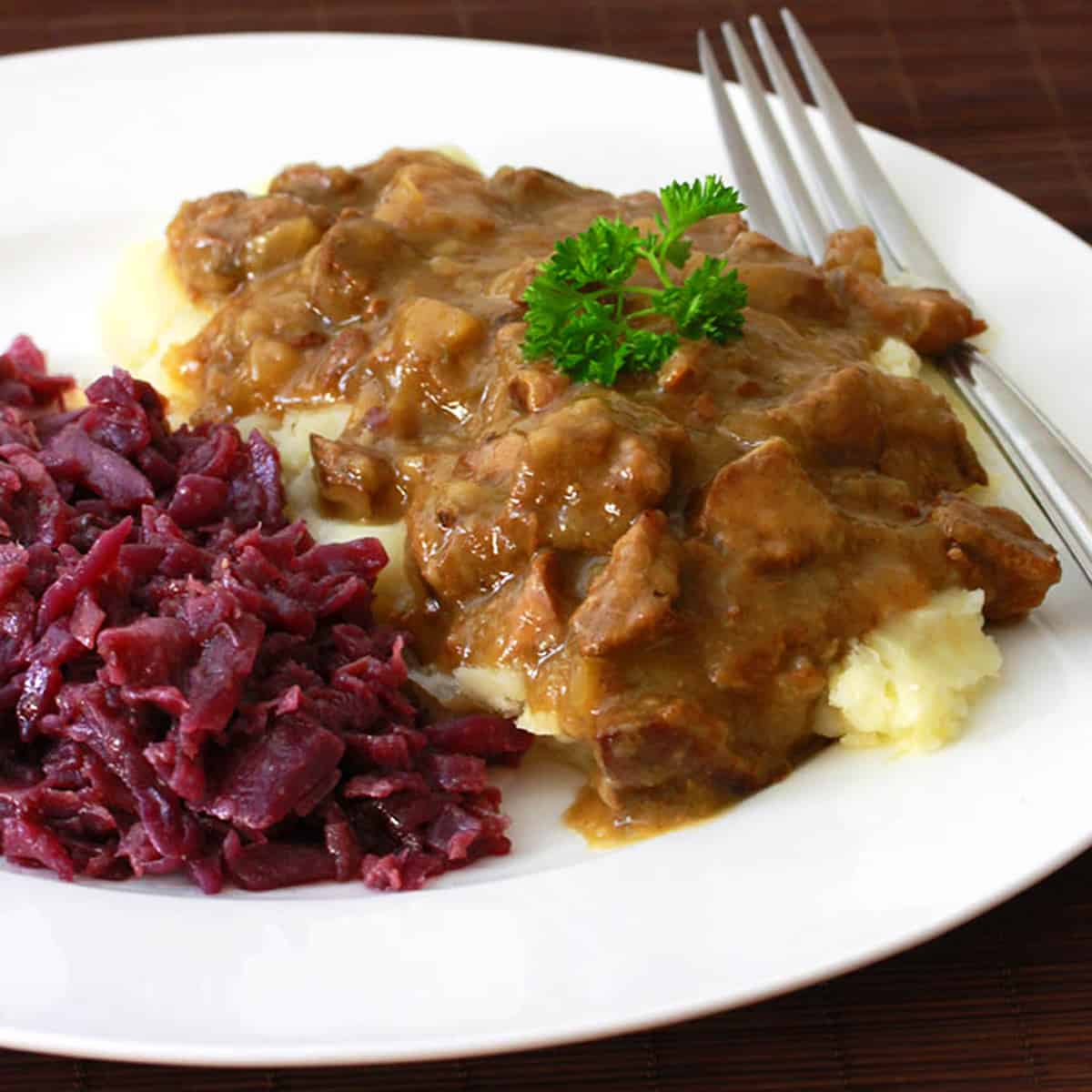
What is Hachee?
The word hachee has its origins in the French hacher, meaning “to chop” and Hachee is sometimes referred to as a “hash.” Hachee has been around since the middle ages and like many of the traditional dishes of Europe that we know and love today, it was originally a peasant dish, created as a means of using up leftover meat and vegetables. The vinegar was used to tenderize tough pieces of meat, much like the French used wine in Coq Au Vin). Less expensive vegetables likes onions were used in generous amounts. A long cooking process further ensured the meat would be tender. Hachee remains a popular and much-loved dish in the Netherlands. So much so that you can find it ready-made in grocery stores. But nothing beats homemade, and your patience in the long, slow cooking process will yield results that will make your taste buds swoon.
Traditional Seasonings in Hachee
The flavor profile of Hachee is significantly different from the traditional beef stews we know here in the U.S.. Hachee uses equal parts of beef and onion and the onions are caramelized. The featured flavors in this stew are cloves, juniper berries, black peppercorns, bay leaves and vinegar – all of which come together to provide a wonderful depth of flavor that is both rich and comforting. The flavor of Hachee shares similarities with German Sauerbraten.

I first made this recipe over 10 years ago when my husband’s family came for a visit. My father-in-law had lived in the Netherlands for a while as a young adult and fell in love with the country, its people, and its food. Many of the dishes he enjoyed there over 40 years ago he hadn’t had since, and he has often mentioned longing to enjoy them again. So I wanted to surprise him with a traditional Dutch meal. I narrowed it down to three options: Boerenkool Stampot, Hutspot, and Hachee. I decided on Hachee. It’s a little more interesting, plus you can’t find the smoked Dutch sausages (rookworst) here that are traditionally eaten with the other two dishes. And it also gave me the excuse to finally make the braised red cabbage with it that many of my readers had been requesting – a side dish that is equally popular in Germany where it is known as Rotkohl.
As my father-in-law sat down to dinner he instantly recognized the dish. “This is the dish I had almost every night during my first two months in the Netherlands!” It was the first time he had had it in over 40 years and he savored every bit. We all did.

Hachee Recipe
Let’s get started!
Cube the beef and pat it dry with a paper towel – this will ensure that it browns well. Sprinkle with a little salt and pepper.
Brown the beef in a Dutch oven. Brown the cubes on all sides. Brown in batches so as not to overcrowd the beef – that will prevent it from browning properly. Remove the beef and set aside, leaving the burnt bits on the bottom of the pan – those will provide a lot of flavor to the stew.

Add some more butter and caramelize the onions until golden brown. Add the flour and stir to combine.
Add the beef to the onions.
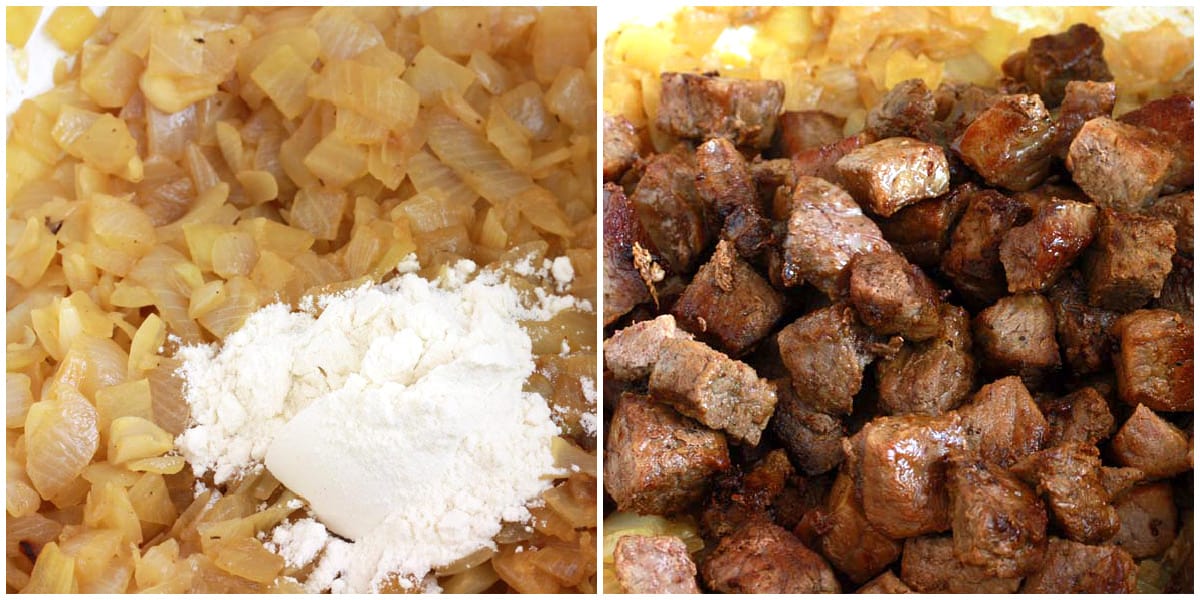
Add the beef broth and the seasonings. Bring to a boil, reduce the heat to low, cover and simmer for 2 1/2 hours. Uncover and simmer for another 30 minutes to help thicken the sauce. If it needs further thickening, make a slurry with equal parts of flour and water and stir it into the stew, stirring constantly to prevent lumping. Return to a simmer until the stew is thickened.
Add salt, pepper and more red wine vinegar to taste.
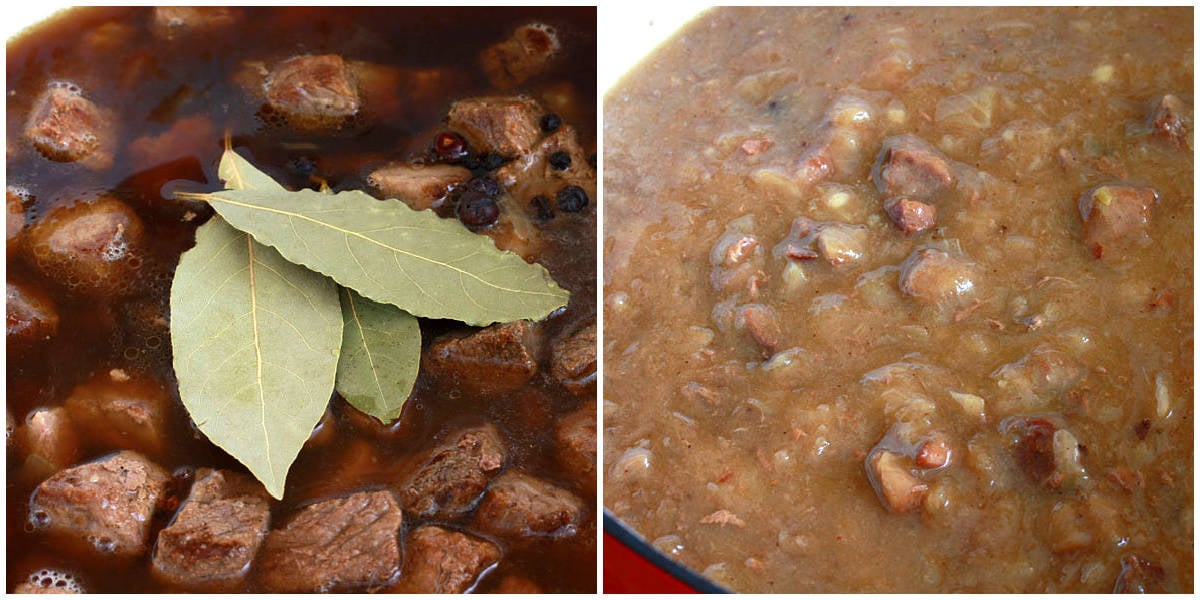
Hachee is traditionally served with aardappelen (potatoes) and rode kool met appeltjes, which is braised red cabbage with apples, also known as Rotkohl in German. A serving of applesauce is also common.
Eet smakelijk!
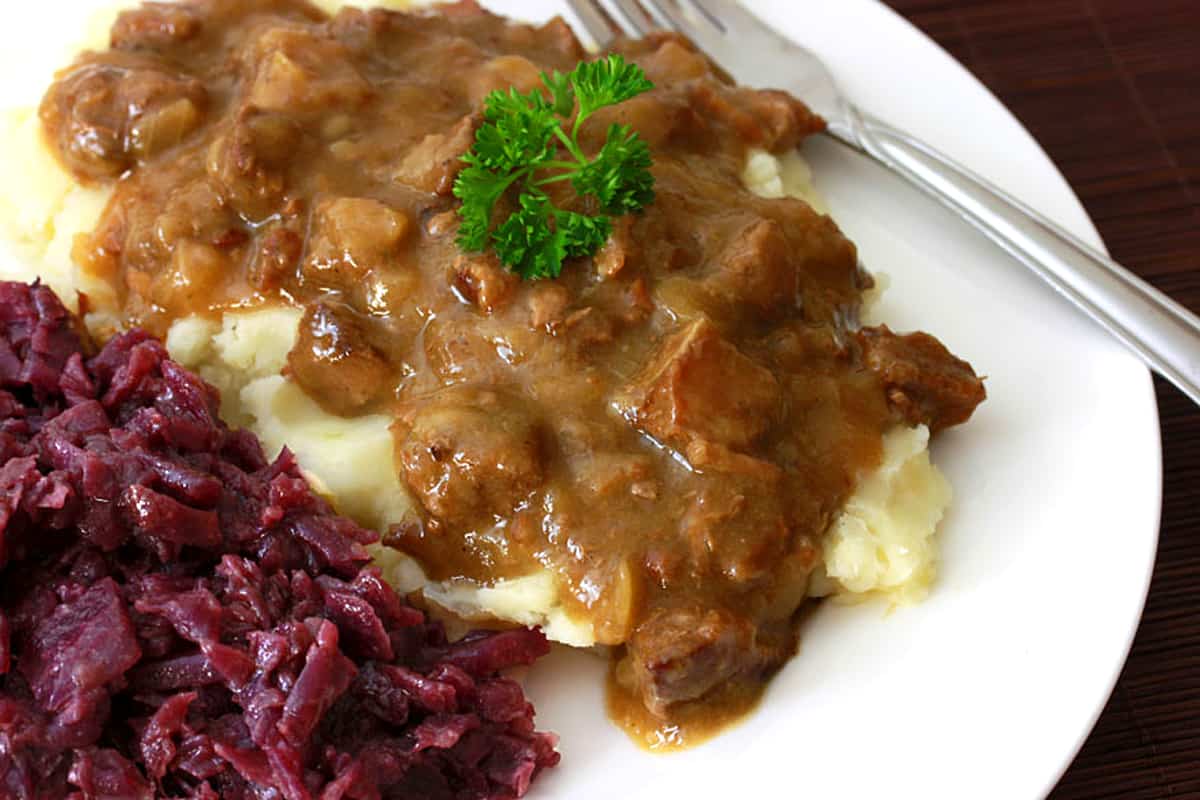
For more delicious beef stews from around the world be sure to try my:
- Swedish Kalops
- Hungarian Goulash
- Guinness Stew
- Pörkölt
- Beef Bourguignon
- Sega Wat
- Old Fashioned Beef Stew
- African Peanut Stew
- Szegedin Goulash
Save This Recipe
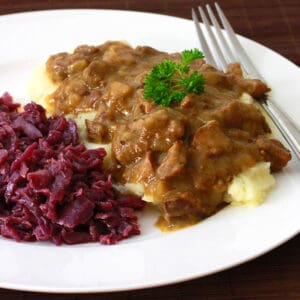
Hachee (Dutch Beef & Onion Stew)
Ingredients
- 2 pounds stewing beef (e.g. chuck) , cubed in 1/2 in. pieces, blotted dry with paper towel, lightly seasoned with salt and pepper
- 3 tablespoons butter
- 2 pounds yellow onions , about 4 large, finely chopped
- 1/4 cup all-purpose flour
- 4 cups good quality beef broth or stock
- 3 large bay leaves
- 4 cloves
- 4 juniper berries
- 10 black peppercorns
- 2 tablespoons red wine vinegar
- 3/4 teaspoon salt
- 1/4 teaspoon freshly ground black pepper
Instructions
- Melt the butter in a Dutch oven over medium-high heat. Brown the beef on all sides, working in batches so as not to overcrowd. Transfer to a plate and set aside. Leave the browned bits in the pan (important for flavor).Add the onions and some more butter if needed and cook until caramelized, about 25 minutes. Add the flour and stir until combined. Add the beef to the onions, stir to combine, and cover with the beef stock just until covered. Add the seasonings and red wine vinegar, stir to combine.Increase the heat and bring the stew to a boil. Reduce the heat to low, cover, and simmer for 2 1/2 hours. Uncover and simmer for another 30 minutes to further thicken the stew. Add salt, pepper and more red wine vinegar to taste. Discard the juniper berries, cloves, and bay leaves. Leave in or discard the peppercorns.Serve with mashed potatoes and braised red cabbage.
Nutrition
Originally published on The Daring Gourmet January 6, 2014


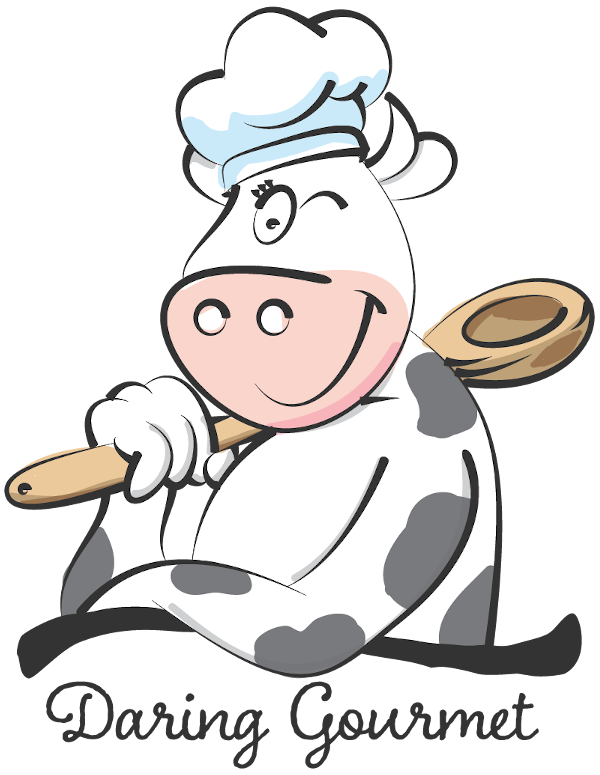
















Back in 1972, I adopted a seven year old girl who had been living with a Dutch foster family, before she taken and put into FOUR failed adoptive placements. By the time I got her, she was a wreck–unable to speak or eat or sleep. I was at my wits end, but a Dutch friend suggested I try some traditional Dutch food, and gave me a few recipes. One was for spinach with lemon and butter nd hard chopped eggs, and another was for “vinegar stew,” pretty well the same as this recipe. She began eating and bit by bit she came alive again. She died unexpectedly last year, but I think about her a lo, and I am so grateful for the loving Dutch foster parents she had as I’m sure they were the ones who gave her the strength to recover from trauma she endured. Today, I was remembering that stew, and since I hadn’t made it in many years, I looked for a recipe and found yours. I’m going to go and make it and I will probably cry when I put it on the table, but that’s as it should be. We have to grieve for those we have lost, and what better way to do it than to eat good food with those who are still here with us. Thank you.
Robin, thank you for sharing that tender and heartfelt story. I hope you and your family find peace and solace as you share this meal and the many memories together <3
Thank you so much. I can’t wait to try the recipe. I’m throwing a party to introduce my family to Dutch cuisine. My lovely daughter in law to be was born in Amsterdam and I wanted to celebrate her heritage with the rest of the family. This looked like an excellent dish to serve! I will let you know how it turns out. Thank you again! Diana
That sounds so fun, Diana, what a great idea! Have a wonderful party and I look forward to hearing what everyone thought of the stew!
Can this recipe be made in a crockpot?
Hi Diana, yes it can. Follow the steps as written and then in step 3 transfer everything to the crock pot and cook on LOW for 5-7 hours or on HIGH for 3-4 hours or until the beef is fork tender.
My mother would always add a table spoon of Appelstroop, Dutch apple spread to this recipe. That helped give it a lovely round sweetness.
My Mom made this every so often and she was a great cook. When I read your recipe it reminded me of her and decided I had to make it this weekend. It was my 1st time and it tastes delicious; if I say so myself. Extremely flavorful. Juniper berries was the only missing ingredient. I also cooked the 3 hours in the oven at 350°F after the startup on the stove. Worked out well.
I’m so glad you enjoyed it, Debby, thanks for the feedback!
We used to eat this with horse meat 😄
Hi Sjors, I believe it. Eating horse is unheard of in the U.S. but it’s not hugely uncommon in several western European countries.
Mariska street got it all perfect hutspot, boerenkool hachee.
Luckily we have a dutch store so i can get the rookworst
By the way one in my family hates…. onions so i have tried carrots with leek instead of onions. Delicious.
I am dutch too
Am just making hachee right now
I saw some very strange recipies here.
Good for you Mariska
I made this dish for the first time and my family and son-in-law just loved it. I was wondering…..could this dish be made with a whole roast as well?
Wonderful, Anne, thank you! Absolutely, you can do a whole roast.